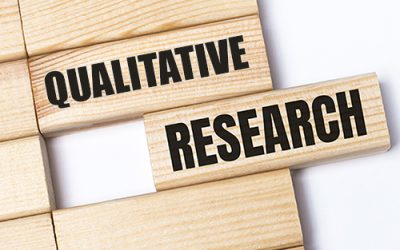Keeping an accurate record of communications is necessary in many professions, and diverse note-taking techniques are frequently used to capture important information during meetings, interviews, or legal procedures. So, enterprises rely on general transcription providers to protect any form of critical content in the form of accurate transcripts. Information that is helpful for businesses is properly transferred via transcription.
When it comes to transcription, there are different types and each industry requires different types of transcription. To know more about the types of transcription, you can read the blog below:
In this blog we will discuss verbatim transcription.
What Is Verbatim Transcription and Why Is It Important?
Word-for-word transcription of a recording or live event is known as verbatim transcription. For a variety of situations, including interviews, depositions, panel discussions, and more, it might be useful as a frame of reference. The precise words that were said, including pauses, stutters, and other noises, are captured in verbatim transcripts. The gold standard for the most accurate speech transcription when it comes to legal or court proceedings is verbatim.
To preserve the record, verbatim transcribing is crucial. You have access to a variety of verbatim and audio transcription services, making it simple to order them. These transcripts can be helpful for you and your team to remember every detail of a customer’s chat, to prepare quotes that were given to you during a Zoom meeting with a famous person, or to accurately record significant talks with HR. It can be disastrous to misquote details that have significant commercial implications or to quote someone erroneously. Without hesitation, verbatim transcripts can aid in accurately recalling conversations and quotations.
Types of Verbatim Transcription
- Intelligent Verbatim: To produce an easily readable transcript, intelligent verbatim transcription, also known as clean read or clean verbatim, combines transcribing with meticulous editing and occasionally light paraphrase. This transcribing method is great for individuals who require accurate, ready-to-print transcripts, making it the preferred transcription method for business recordings. Everything that is spoken on the recording is included, with some minor paraphrase, if necessary. However, it excludes typos, fillers (ums, uhs, you know, etc.), stutters (In- In- In- In fact), false starts (incomplete sentences), repeats, nonverbal cues, and background noise.
- Verbatim: When compared to intelligent verbatim transcription, verbatim is one level more detailed. Every word from the recording, including grammatical mistakes and false beginnings, is accurately transcribed in this manner. Stutters and repeats are among the extraneous features that are cut out. Students, researchers, and journalists that require transcripts that are accurate to the tape but free of unnecessary detail choose this transcribing style. Filler words, stutters, irrelevant repetitions, non-verbal communication, and background noise are not included in the recording, but false starts, relevant repetitions, or grammatical errors are included.
- True Verbatim: The most thorough transcription of a recording, containing every word, sound, and nonverbal cue, is known as true verbatim. This transcribing style is used for academic study and analysis because every small detail counts. Every word on the tape, as well as nonverbal cues like laughter and pauses, and background noises like people sneezing and crying children, among other things are transcribed. Pauses and stutters that don’t contribute to the transcript and disrupt the reading process are not included.
4 Rules of Verbatim Transcription
The following are the main four rules of verbatim transcription:
- Rule 1: Write down EVERY WORD (avoid paraphrasing): Instead of copying the exact words that are being uttered, many transcriptionists have the practice of paraphrasing remarks to convey the main point. Actually, that is intelligent verbatim transcription. Since it creates transcripts that are simple to read, intelligent verbatim is greatly desired in business transcription (podcasts, meetings, YouTube videos, etc.), but it is less preferred by researchers and journalists who need to know exactly what was said.
- Rule 2: Don’t overlook nonverbal cues when communicating: There are many elements of communication besides words, like laughing, pauses, background noise, etc. All of them are recorded verbatim in order to provide a true representation of what is being stated.
- Rule 3: Take note of the fillers and false starts: Fillers are the “ums,” “ahs,” and “you knows” that speakers frequently utilize to purchase time to reflect. False starts are sentences that begin but are never finished, for example: “I’d argue that’s not such a… I mean, it might not be.” Fillers and false starts can disrupt the flow of speech, but they frequently reveal how a speaker thinks. Therefore, verbatim transcription includes these parts as they are rather than cutting them out of the transcript.
- Rule 4: Observe any outside noises: Knowing what’s going on around the topic or interviewee while they are speaking is frequently necessary for qualitative research and even market research. The sounds of doors opening, individuals entering the room, a side chat between participants, etc. are some instances of external sounds. These sounds or events need to be properly noted on the transcript with time stamps and brackets.
How to Do Verbatim Transcription
Transcripts can be done either manually by a team of professional transcribers or by automatically using tools based on artificial intelligence (AI), or they can be outsourced to a transcription service. It is vital to note that when transcripts are produced internally or by AI alone, it can be far more difficult to get them exactly word for word. Companies that produce them internally frequently employ interns or workers with non-transcriptional backgrounds. So, getting things done correctly can be a painstaking, laborious, and time-consuming procedure. However, outsourcing transcription to reliable general transcription services can help in generating accurate transcripts in verbatim format. These services have professional transcriptionists who are well-trained and experienced which helps to produce accurate transcripts.




